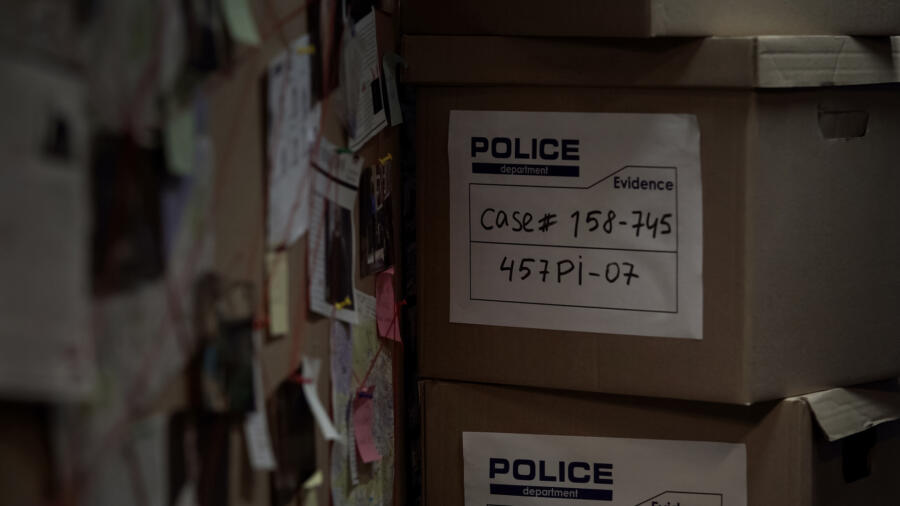As a longtime investigator with the Naval Criminal Investigative Service (NCIS), Joe Kennedy founded the agency’s first Cold Case Homicide Unit and led criminal probes from the Philippines to Fallujah.
After retiring from NCIS in 2014, Kennedy founded a training academy for homicide detectives and established the Carolinas Cold Case Coalition, a group of active and retired federal, state and local investigators who pool their expertise to help police departments around the U.S. solve cold cases.
Kennedy spoke with A&E True Crime about how advances in DNA analysis have revolutionized such investigations and why many cold cases remain stubbornly difficult to crack.
What is a cold case, and why do some cases go cold?
The common definition of a cold case is a homicide that hasn’t been solved within a year or has changed detectives. There are currently 285,000 cold cases in the U.S. Only one in five will ever identify a new suspect. Only one in 20 of those new suspects will ever get charged and only one in 100 of those charged will ever be convicted.
Cases go cold for a number of reasons. There are only three ways to solve a murder: physical evidence, witness testimony and confessions. Sometimes you don’t get physical evidence. If the shooter is 20 or 30 feet away, there’s no DNA involved, although maybe you can trace the bullets and the cartridge casings. Witnesses change their stories. They become fearful before the case goes to trial or their testimony gets impeached. A lot of cases built on witnesses eventually fall apart.
Gaining rapport with suspects is the key to securing confessions from them. But many investigators spend far too much time trying to get suspects to answer their questions instead of building rapport and listening to them.
Sometimes there’s a lot of white noise that distracts the original investigators and sends them down the wrong track. And sometimes there are clues that are overlooked. Every murder will talk to you if you take the time to read the scene. Unfortunately, in some cities, the volume of cases is so high, the police don’t have time to sit and really read the scene.
How can you read the scene if a case is more than a year old?
A lot of those details will be in the notes and the crime scene photos and the autopsy reports. We study those and maybe we’re able to put together something the original investigators missed. People think cold-case work is glamorous, but it can take weeks or months of reading the files just to get up to speed.
That’s what happened with one of the first cold cases I was involved with, in the Virgin Islands in 1994. A ship pulled into St. Thomas and a naval officer was brutally murdered on his way to an ATM machine. The case was 15 or 16 months old when we got it and it took us 33 days to solve it. But the first 20 days were just spent reading the files.
[Watch episodes of Cold Case Files Classic in A&E Crime Central.]
The original investigators had locked onto the wrong group of suspects. We picked the case apart and started re-evaluating them. We developed a rapport with a young man who knew some of the suspects and he said one guy was having nightmares. That was a huge clue that we should look at him further.
How have cold-case investigations changed since then?
When I first started in cold case, our focus was on interviewing and trying to exploit changing relationships between people. Over the years, suspects almost always tell somebody they did the murder, and then their relationship [with that person] changes. The girlfriend who wouldn’t talk 20 years ago is now an ex-girlfriend, and she’s willing to say, ‘Yeah, one night he broke out crying and told me the whole thing. . .’ That was the key to solving a lot of cold cases.
Since then, there have been a couple of game-changers. We used to need samples of blood or saliva or semen the size of a quarter to analyze DNA. Now we need less than 20 nanograms. A grain of salt is 58,000 nanograms—that’s crazy! And now we’re able to extract useable DNA from samples that were degraded by sunlight or rain and are 20 or 30 years old.
A few years ago, scientists in England extracted Jack the Ripper’s DNA from some fabric that was over 100 years old. There’s a lot of evidence sitting in evidence vaults waiting for science to catch up to it.
How does forensic genetic genealogy fit in?
That’s the biggest game-changer of all.
In the vast majority of cold cases, the perpetrator’s name was mentioned somewhere in the original police files—they were a neighbor or they called the police or everybody thought they did it but there wasn’t enough evidence. Forensic genetic genealogy helps identify the ‘ghost suspects’ who were never mentioned anywhere. The Golden State Killer was never on anybody’s radar until forensic genealogists constructed his family tree in 2018.
About 23 million Americans have sent their DNA to companies like Ancestry.com or 23andMe. Law enforcement agencies can tap into some of those databases, and if there was any DNA left behind at a crime scene, we can use that to look for people who have some of the same DNA. Then we work with genealogists who can fill in the family tree around those people and lead to new suspects. It’s an interesting partnership and it’s turned genealogists into crime fighters.
How do you get from a family tree to a new suspect?
A genealogist might [compare the DNA and] say, ‘I think it’s one of these three brothers. I’m pretty sure it’s this one.’
We would put that guy under surveillance, covertly. We follow him around. He gets a cup of coffee and throws the cup in the trash. We pick it up and send it to the lab and—ding-a ling!—the DNA matches the DNA from the crime scene.
Then we can get a search warrant and officially get the suspect’s DNA. And we got to him through his brother’s daughter who wanted to find her distant cousins. She never intended to get her uncle locked up for murder.
What allows law-enforcement agencies to do this is GEDMatch, the computer software that compares DNA across different companies’ data. But it’s gotten more difficult to do because of privacy concerns. Now, a lot of databases say users have to opt-in to allow their DNA to be shared with law-enforcement agencies. GEDMatch has added an opt-in requirement too.
How did the Carolinas Cold Case Coalition come about and what does it do?
After I retired from NCIS in 2014, I got calls from across the country to help with cases. I started seeing a trend—that some basic gumshoe work and people skills were missing. I decided to put together a group of retired cold-case investigators who could brainstorm and help police departments with resources. I was blown away by the response. We have about 30—sometimes 50—investigators. Half of us are retired and half are still working.
A police department will ask us for help and present their case to us. We have experts in interrogation, blood spatter, crime scene, drugs, forensic pathology and forensic anthropology. We have a polygraph operator and a former undercover agent. The key is getting as many diverse thoughts and experiences in there to share their ideas. And we operate in anonymity. If we help a police department, we don’t want any credit. We’ve all had our day in the sun. Our passion is helping to solve cases.
Talk about that passion. Is it about giving families closure or the satisfaction of solving a mystery?
Families don’t really get closure—that’s a misnomer. They get resolution and that’s important, but it doesn’t bring their loved one back.
Some cold-case investigators are motivated by the challenge. Can they solve a case that nobody else could? I get up at 4 a.m. to look at cold cases and I teach it all over the country, but I don’t get a lot of satisfaction out of solving them. If we do, it’s like, okay, there are 285,000 more to go. I do it because it’s a way of coping with my own personal life. I had five family members die in an 18-month period in the early 1990s. That made me realize, man, life is precious. You only get one life and nobody should be able to cut it short.
Related Features:
Why Aren’t Police Solving More Murders With Genealogy Websites?
The Cold Case Murders That Keep Retired Detectives Up at Night


